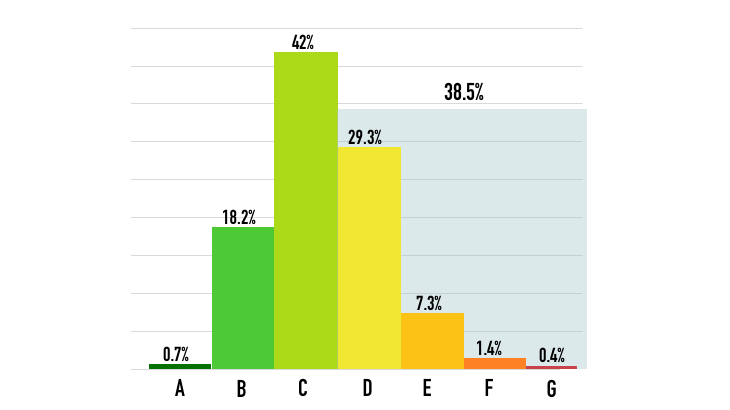Meet the Steering Group - Harry Mellor

As others in the Steering Group are busy with local election matters it falls to someone with zero personal election interest to introduce themself.
Q1. What is your motivation for being involved with the environmental movement and with CA-WN in particular?
Simple questions that in my case warrant detailed, lengthy answers. But in short, if CA-WN didn’t exist I’d have had to invent it. There’s only so much that can be achieved single-handedly, effective action on climate needs collective and constructive action. I’m finding it highly nourishing getting things done with CA-WN. That’s motivation enough.
To be clear, as politicians are wont to say, it’s not just my or CA-WN’s view that action is essential in the face of climate change. People with power have known it for decades. In her 1988 speech to the Royal Society1 Prime Minister Margaret Thatcher enunciated with characteristic clarity ‘Protecting this balance of nature is therefore one of the great challenges of the late Twentieth Century’. Regrettably, commercial realities meant that her environmental baby got thrown out with businesses’ bathwater. Wherever one looks in the 21st Century it’s still business-as-usual. Restoring the balance of nature is now an even greater challenge.
The CA-WN mission is to reduce West Northamptonshire’s greenhouse gas emissions and prepare us for living with weather extremes. That translates into some very straightforward actions at home.
Because everything we do has an environmental consequence, at a household level it would be preferable if we consumed less. That doesn’t mean doing without, rather that we continue to consume what we’ve always consumed, but with greater environmental consideration.
Of course, if we spent less, the economy could suffer. But spending wisely can increase local business prosperity. A multinational company’s losses in trade could create profit for a local producer. Our region has always grown food and manufactured our domestic and industrial necessities. With roads that are the backbone of national travel, we’ve always excelled at hospitality. CA-WN is collaborating with others on actions, not just words, that over time could mean that our self-sufficient past can become our greener future.
More immediately it’s our homes that deserve improvement. We’ve grown accustomed to living in the comfort of winter warmth. Now, the cost of keeping cosy is fuelling significant change.
An energy crisis 50 years ago, again the product of war, led to great progress on making us all more efficient users of energy. Back then everything changed to help us use less, from the speed limits on our roads to the introduction of a new Conservation of Fuel and Power section in the Building Regulations2. In Milton Keynes I’d been tangentially involved in showing how new homes could be heated for less and sell for above market values3.
Successive amendments to the Building Regulations, along with the legal obligations of the Paris Agreement4, empowered Local Planning Authorities to require new housing they approved to have high sustainability standards. In a backlash, developers deemed this as entirely unnecessary ‘red tape’. Ministerial statements, like Eric Pickles’s in 20155, were used to challenge any Planning Authority’s right to dictate the terms of their proposed developments. For West Northamptonshire that’s meant a decade or more of housing estate layouts that generally fail to encourage walking and cycling, streets that lack the summer shade of trees and homes built with scant regard to future needs in terms of minimal costs for maintaining indoor comfort levels at all times of the year. Having lived in New Towns and worked alongside architects and urban planners since college days, I know how difficult it can be to procure high quality built environments: difficult, but not impossible. With the latest changes to Building Regulations and planning laws I’m looking forward to CA-WN being able to constructively influence the design and layout of future West Northamptonshire housing estates.
For our 240,000+ existing West Northamptonshire homes CA-WN and I have learned a lot since starting our Building Resilience Project6, not least how many of them have been rated as energy inefficient.

The more efficient homes are in Energy Performance Certificate Bands A, B and C. Based on our research there could be over 60,000 homes in our towns and villages in bands D to G that would benefit from an increase in the effectiveness of their existing heating system, or having it replaced entirely.
We’ve also discovered the difficulty of obtaining impartial advice on how householders might achieve greater energy efficiency. Put bluntly, if we compare the design and operation of housing to the evolution of the motor car, from the days when chauffeurs were required to literally light the fire in the boilers of steam-driven horseless carriages to today’s automatic everything car, in comparison, our homes are still at the stage of needing a chauffeur.
In many practical senses householders are entirely dependent on external experts. It’s not meant as an insult to the building industry to observe that home improvement cost-benefit analysis skills aren’t usually found in the toolboxes of the construction, electrical or plumbing trades. Yet that’s exactly what’s needed when a householder asks if investing in an energy efficiency improvement is worthwhile. It’s more than a question of simple payback, it’s about understanding the risks that might be the result of poorly implemented energy efficiency measures, like mould growth from unexpected moisture accumulation or summertime overheating in a super-insulated home that has lost the cooling benefits of its traditional solid wall construction.
In straight payback terms it would take several decades to recover the costs of filling my own home’s cavity walls with insulation, of installing solar water heating and battery-included photovoltaic panels. In our case, if not cost-effective, the work was made financially affordable by spreading it over several years.
Each stage entailed thorough research including establishing the worth of received wisdom. Architect friends for example warned us off solar water heating because of their own negative experience. It emerged that most problems were caused by the poor implementation of badly specified equipment. Hindsight meant we could get that right. Our solar thermal system harnesses warmth whatever the outside temperature. We have no need to supplement our solar-heated water. However our solar electricity is a different matter. Very tall trees on our boundary limit wintertime solar gains and our choice of panel wasn’t the best. We’d chosen the highest output performing panels. It would have been better, and cheaper, to opt for panels that made electricity even in low light conditions. Even so, on a sunny winter’s day, our battery is charged sufficient to keep us powered into next day’s early hours. By summer we are pumping loads of surplus power into the grid.
Unusually for a rural property we are on the gas main and after thirty-odd years, and three condensing gas boilers, we are reviewing our next source of comfort heating. A heat pump is the answer to reducing our greenhouse gas emissions. That would mean recalculating each room’s heat requirement and probably swapping out existing radiators for more efficient convective panels. Having ruled out on capital costs a ground source heat pump there’s a very wide choice of air-to-water heat pump, each with its own operating efficiency attributes and related installer skills and maintenance reputation. Very much work-in-progress.
Q2. What other roles do you have in your life outside of being involved with CA-WN?
Interesting! One way or another, CA-WN is turning out to be pretty much a full-time responsibility.
Q3. If you were given one wish to change something in West Northamptonshire what would it be?
Though not a West Northamptonshire exclusive, wouldn’t it be so much better if politicians ceased using life’s circumstances to bolster Party political self-interests?
For goodness sake, we are all in this together. I’d wish for our politicians to act collectively in the interests of everyone, as other districts have done7.

Q3. What one change have you made for the climate in your own life that you are happiest about and why?
The already discussed home improvements have been a great start in reducing our greenhouse gas emissions. Being somewhat insulated from the worst effects of rising energy costs makes me happy. I’ll be even happier when home comforts are powered entirely by electricity sourced from renewables.
Q4. Tell us something about yourself that people might find surprising.
I’ve held off writing this for months. Ours is such a judgmental society that I didn’t want to be judged by what is written. Better to be judged by what we do. Plus, I’m relying on the length of this Meet the Steering Group to mean it remains substantially unread.
Bad men need nothing more to compass their ends, than that good men should look on and do nothing. - John Stuart Mill in an inaugural address at the University of St. Andrews.
References
1 Margaret Thatcher: Speech to the Royal Society (climate change)
2 Conservation of fuel and power: Approved Document L
3 Milton Keynes Energy World
4 The Paris Agreement
5 House of Commons: Written Statement (HCWS509)
6 CA-WN’s Building Resilience Project
7 Independents for Frome

